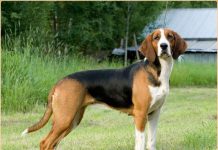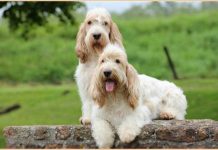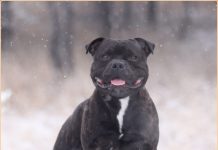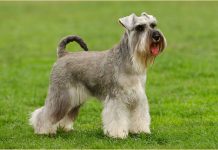Siberian husky is breathtakingly beautiful dog. Its aristocratic look, majestic coat with striking facial mark and blue colored eyes gives the dog spellbound beauty. The dog shares the same ancestors as any other spitz breed. It is advisable to not get lost in dog’s beauty as the dog is strictly not suitable for first time dog owners.
Its intelligent mind, confident demeanor and athletic personality can be challenging to manage and control. Huskies are also escape artists, so you need to have yard fenced all around.
With the eye catching look and awe inspiring skills huskies have captured the attention of artist, film producers and poets. If we look at the positive traits then for experienced dog owners it is the best breed. The dog is social in nature, patient with kids and can thrive in multi dogs’ homes.
This breed doesn’t need your attention and pampering every time so a good pet for those pet lovers who usually stay away from home for longer duration of time. When properly trained and cared, the breed make wonderful family companion.
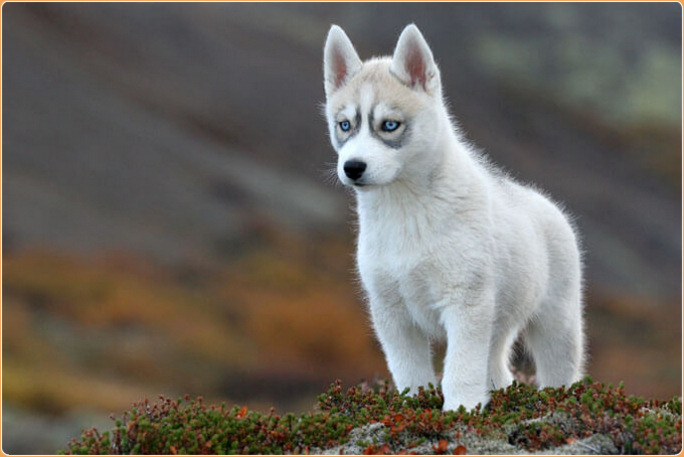
Siberian Husky Origin
The breed originated in north-eastern Siberia, Russia. The breed was bred by indigenous people of Chukchi Peninsula region and region of Arctic Ocean. This breed used to be their part and parcel of life. The dog helped them in hunting and gathering food for their survival.
The breed thick coat helped it to survive even in minus temperatures. A Russian fur trader introduced this dog to Alaska where it was used as sled dog. Alaskans referred to this breed as “Siberian Rats” because its weight is lesser than malamute breed- a similar breed of spitz family.
Siberian Husky Facts And Characteristics
- The breed belongs to Siberia, Russia
- The breed sheds lightly in colder climate and sheds heavily in warmer climates
- They are not suitable for apartment life but if given right exercise and training, they can do well
- They are escape artist so always keep a watch on your dog
- The breed is immensely destructive so make sure you provide it care, exercise and nourishment
- The breed rarely barks even when a stranger intrudes your home. Hence not suitable watch dog
- Not suitable for timid and new dog owners
- They are passionately adventure breed. They cannot sit idle
- They are patient around kids and social towards other canine animals
- The breed lives around 12 to 15 years of age
- Their weight is approximately 20–27 kg
- Height of the breed ranges from 54–60 cm
- They come in multitude of colors of shades of white, grey and black
- Puppy cost is around $1000 to $1500
- The breed is not hypoallergenic.
Appearance
The breed looks like a fox. The skull is of medium size and wedged in shape. Muzzle is lengthy with tapered end. The ears are triangular in shape and sits atop the head. Eyes are of blue or brown color or could be one blue and other eye of brown color. The tail is bushy and carried over back. Nose can be of pink, black, brown, tan or liver color.
-
Size and Weight
Ideal size of the male breed is 54–60 cm and female breed is 50–56 cm. Male weighs around 20–27 kg and female weighs around 16–23 kg.
-
Coat and Color
Striking facial marks appears in wide variety. Its coat is thickest of many dog’s breed. It can withstand temperature up to -40 o C to -50 o C. It possess double coat. The top coat is dense, medium size and straight. Undercoat is softer and profuse. The shedding of its coat depends upon type of climate it is living in. Twice the time, the dog will shed its entire coat. Huskies come in many colors and markings. This breed can be mostly in following colors- black and white, grey and white, copper and white and pure white.

Temperament
- Personality – Huskies are social animals that are not even suspicious of strangers. They are even tempered and their independent personality is appealing to many people. Many people fall in love with its exotic beauty and bring it home without caring about risk associated with taming this dog. Because of its strong and carefree attitude the dog is not recommended for first time dog owners.
- Behavior – The dog doesn’t need human companion every time. It doesn’t need human’s attention and comparatively not a human pleasure. It seems often that the dog is lost in deep thought. Training and exercise in order to maintain good behavior in the dog is necessary. They are escape artist so make sure that the yard is fenced high. The breed is lovable around elder children.
- Trainability – The breed is notorious and difficult to train. Obedience class is must for it. Firm leadership and persistency is required to train it. A novice trainer is not appropriate for its training.
- Activities Requirement – The breed loves to go on adventure trip, hiking and biking. They are sled dogs, so love to pull objects. They are active and energetic breed so active owner is suitable for this breed.
Feeding
High quality food is recommended for Siberian Husky healthy skin and coat. 1.5 to 2 cups of high quality food are recommended daily divided into two meals. You can feed dry kibble or wet food, most of the people feed them raw diet, which is easy to store and last longer.
Chukchis developed Siberian Husky to pull light load with great pace over long distances in low temperature with less food intake.
Adjust the level of protein in their diet based on their activity level. Feeding low protein food during summer is appropriate, around 20 percent and in winter months they work in harness which may require 33 percent protein food. Do not overfeed and keep checking the weight at regular intervals and be selective about supplements.
Lifespan
This breed lives up to 12 to 15 years.
Health Issues
The breed is not hypoallergenic. Health concerns include- nasal depigmentation, oral eosinophilia granuloma, blood clotting, hip dysplasia, juvenile cataracts etc.
Siberian Husky Grooming
Siberian husky is a heavy shedder, so expect lots of hair and shedding. They have thick double layered coat, a dense, soft undercoat and longer topcoat of straight, short guard hairs. They shed excessively twice a year, during spring and fall. The undercoat is completely lost during shedding.
Keep your vacuum cleaner ready with ample time about 30 minutes during seasons. They require brushing once weekly during the year and daily during seasonal shedding. Rake out the old coat continuously by using pin brush and metal comb. Siberian Huskies in cooler climates tend to shed less than those in warmer regions.
They are considered natural breed and remarkably self-cleaning, don’t emit doggy odor and require only few baths a year unless wiggle in something disgusting or appear in conformation shows. Use quality dog shampoo to bathe to keep natural oils on the coat and skin.
Brush its teeth a minimum two to three times a week to remove tartar buildup and bacteria if any. Daily brushing is also best to prevent bad breath and gum diseases. Trim the nails once or twice a month to avoid painful tears. Check ears weekly for redness, bad odor and wipe it with cotton ball dipped in gentle ear cleaner.
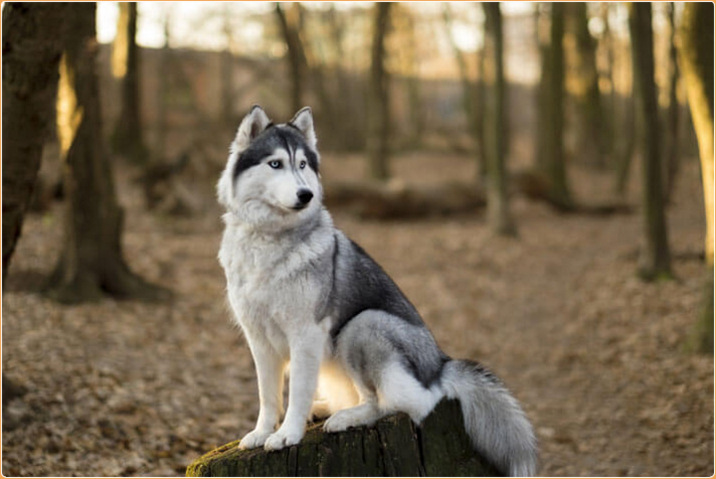
Habitat
The dog appreciates cold climate. Generally apartment accompanied with yard or garden is recommended for this breed. The dog can tolerate extreme cold and heat. Because of thick coat, the heat doesn’t penetrate its skin. But extra care should be taken in hot climates.
Siberian Husky Pet Names
- Brandy
- Sasha
- Molly
- Daisy
- Josh
Things To Consider Before Buying
Pros
- If trained well, it is a good natured pet
- The dog is social and doesn’t mind even strangers at home
- The dog thrives well with other dogs at home
- The dog is independent and free spirited. It is suitable for people who stay away from home
- The dog is strikingly appealing.
Cons
- The breed is not a suitable watch dog or guard dog. It doesn’t even bark looking at intruders
- This breed is not suitable for timid and novice dog owners
- Training this breed could be challenging.


